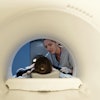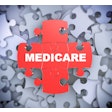
Radiologists are in a unique position to spur change in addressing healthcare disparities at the individual, institutional, and national levels, according to research published October 14 in Clinical Imaging.
In their article, Dr. Miral Patel and Dr. Jay Parikh from the University of Texas suggest that addressing disparities in radiology can be done through a three-pronged approach.
"Over the next thirty years, the U.S. will see an increasingly diverse population. As such, current diversity-related healthcare disparities will likely increase," Patel and Parikh wrote. "Radiology, via providing imaging examinations and procedures, is inherently involved in creating and perpetuating diversity-related healthcare disparities."
Healthcare disparities have been prevalent throughout history, but it was a headline of note in 2020 as the U.S. faced the COVID-19 pandemic.
In 2002, the Institute of Medicine published a report that stated racial and ethnic minority populations receive lower quality healthcare than white Americans, even when considering access-related and socioeconomic factors. The researchers said this reflects an inherent bias in all levels of the healthcare system.
By 2050, it is projected that within the U.S. the percentage of Asians and Hispanics will triple, the percentage of Black population will double, and white people will be the minority racial group. By 2060, an estimated 57% of the American population is projected to be made up of underrepresented groups subject to current healthcare disparities.
"As diversity in the U.S. population increases, it is anticipated that healthcare disparities will further increase," researchers said.
Patel and Parikh's three-pronged approach includes looking at the current state of education, goals within institutions and leveraging national support.
At the individual level, the authors said education is needed for radiologists on the existence of disparities, including a web-based training program for continuing education requirements. This includes understanding a radiologist's own contribution to these disparities, developing radiology-specific cultural competency training, and increasing awareness of the role of political action committees is needed.
"Similarly, it will be important to highlight issues related to insurance coverage of radiology examinations," Patel and Parikh wrote.
At the institutional level, Patel and Parikh said practices should embrace systemic change. This includes reevaluating goals and incentives and creating new mandated requirements addressing disparities with outcomes measures.
One example includes breaking down satisfaction, outcomes, and quality measures by race, cultural identification, and language. Another is institutes supporting healthcare professionals as they are educated.
"Specifically reviewing complaints related to discrimination within one's organization may also be beneficial," Patel and Parikh said.
At the national level, radiology organizations could be leveraged to co-sponsor annual national meetings on radiological disparities based on diversity. The authors said this would enable an open forum of discussion among a diverse group of radiologists.
"To live in the radiology 'bubble' and claim that radiologists are not included in the perpetuation of health care disparities given the lack of patient interaction in most radiologic subspecialties is an argument of ignorance," Patel and Parikh wrote. "Many of the specific issues involving healthcare disparities specifically include eligibility, access, and adherence to radiologic screening examinations."



















